Metamaterial-Enhanced Microstrip Antenna with Integrated Channel Performance Evaluation for Modern Communication Networks
Abstract
1. Introduction
2. Antenna Design Specifications
2.1. Antenna Geometry
2.2. Reflector Geometrical Details
3. Reflector Characterizations
4. Antenna Design Methodology
4.1. Antenna Performance
4.2. Effect of Ground Plane Aperture
4.3. MTM Filter Introduction
4.4. Reflector Introduction
4.5. Unit Cell Number Effects
4.6. Ground Plane Size Effects
4.7. Antenna Beam Steering
5. Discussion
5.1. Antenna Measurements
5.2. Channel Performance Measurements
6. Conclusions
Author Contributions
Funding
Institutional Review Board Statement
Informed Consent Statement
Data Availability Statement
Acknowledgments
Conflicts of Interest
References
- Jwair, M.H.; Elwi, T.A.; Khamas, S.K.; Farajidavar, A.; Ismail, A.B. Circularly shaped metamaterial fractal reconfigurable antenna for 5G networks. Iraqi J. ICT 2023, 6, 65–75. [Google Scholar] [CrossRef]
- Kamil, A.S.; Misran, N.; Oleiwi, T.A. Demystifying 5G: The Strategic Evolution to Massive MIMO for Enhanced Network Capacity and Economic Gains. Power Syst. Technol. 2025, 49, 1086–1120. [Google Scholar] [CrossRef]
- Balanis, C.A. Modern Antenna Handbook; Wiley, John & Sons, Inc.: Hoboken, NJ, USA, 2008. [Google Scholar]
- Elwi, T.A.; Al-Rizzo, H.M. Fresnel lenses based on nano shell-silver coated silica array for solar cells applications. Prog. Electromagn. Res. B 2011, 32, 263–282. [Google Scholar] [CrossRef][Green Version]
- Yang, F.R.; Ma, K.P.; Qian, Y.; Hoh, T. Uniplanar compact photonic band gap (UC-PBG) structure and its applications for microwave circuits. IEEE Trans. Microw. Theory Tech. 1999, 47, 1509–1514. [Google Scholar] [CrossRef]
- Al-Saegh, A.M.; Taher, F.; Elwi, T.A.; Alibakhshikenari, M.; Virdee, B.S.; Livreri, P.; Al-Jumaily, A.; Sree, M.F.A.; Kouhalvandi, L.; Hassain, Z.A.A.; et al. AI-based investigation and mitigation of rain effect on channel performance with aid of a novel 3D slot array antenna design for high throughput satellite system. IEEE Access 2024, 12, 29926–29939. [Google Scholar] [CrossRef]
- Abdulkareem, Z.J.; Hamad, T.K.; Elwi, T.A. Reconfigurable metasurface based on graphene micro-ribbons for beam focusing applications. J. Theor. Appl. Phys. 2025, 19. [Google Scholar] [CrossRef]
- Elwi, T.A.; Al-Rizzo, H.M.; Bouaynaya, N.; Hammood, M.M.; Al-Naiemy, Y. Theory of gain enhancement of UC–PBG antenna structures without invoking Maxwell equations: An array signal processing approach. Prog. Electromagn. Res. B 2011, 34, 15–30. [Google Scholar] [CrossRef]
- Zaal, R.M.; Kamal, N.N.; Ahmed, M.A.; Al-Sultani, S.H.G.; Bin, S.K.; Oleiwi, T.A. Direct Antenna Beam Squint Correction Using AI-Equalization Strategy for 3D MIMO Array System. In Proceedings of the 2024 4th International Conference on Artificial Intelligence and Signal Processing (AISP), Vijayawada, India, 26–28 October 2024; pp. 1–5. [Google Scholar] [CrossRef]
- Azeez, A.R.; Al-Sharify, T.A.; Abdullah, O.; Salam, Z.; Al-khaylani, H.H.; Oleiwi, T.A. High Gain Tapered Slot Antenna Based on Offset Radiation Characteristic for 5G Wireless Applications. In Proceedings of the 2024 4th International Conference on Artificial Intelligence and Signal Processing (AISP), Vijayawada, India, 26–28 October 2024; pp. 1–5. [Google Scholar] [CrossRef]
- Al-Saegh, A.M.; Elwi, T.A. Direct extraction of rain-induced impairments on satellite communication channel in subtropical climate at K and Ka bands. Telecommun. Syst. 2020, 74, 15–25. [Google Scholar] [CrossRef]
- Al-Saegh, A.M.; Elwi, T.A.; Abdullah, O.A.; Sali, A.; Aljumaily, A.H.J. Rainfall Effect on Satellite Communications in Mosul at Frequencies above 10 GHz. In Proceedings of the 2021 7th International Conference on Space Science and Communication (IconSpace), Selangor, Malaysia, 23–24 November 2021; pp. 318–322. [Google Scholar] [CrossRef]
- Al Naiemy, Y.; Abdulateef, A.N.; Hamad, A.R.; Ismael, M.S.; Ruthramurthy, B.; Elwi, T.A.; Nagy, L.; Zwick, T. A Further Realization of Binary Genetic Algorithm to Design a Dual Frequency Band Rectenna for Energy Harvesting in 5G Networks. DJES 2025, 18, 203–214. [Google Scholar] [CrossRef]
- Rashid, S.A.; Audah, L.; Hamdi, M.M.; Abood, M.S.; Abbas, G.R.; Mohammed, B.S.; Elwi, T.A.; Khan, S.; Virdee, B.S.; Krasniqi, A.; et al. Delay-minimization and back-off aware Q-learning with advanced bio-inspired CH selection for multi-hop communication in vehicular ad-hoc networks. Radio Sci. 2025, 60, e2024RS008165. [Google Scholar] [CrossRef]
- Hamad, A.R.; Al-Adhami, A.; Elmunim, N.A.; Alibakhshikenari, M.; Virdee, B.; Hamad, H.S.; Jayanthi, R.; Mariyanayagam, D.; Lubangakene, I.; Kumar, S.; et al. Rectenna design optimized by binary genetic algorithm for hybrid energy harvesting applications across 5G sub-6GHz band. Radio Sci. 2025, 60, e2024RS008154. [Google Scholar] [CrossRef]
- Attrah, Z.; Al-Sharify, M.T.; Al-Janabi, A.F.; Yetkın, G.Ö.; Oleiwi, T.A.; Al-Khaylani, H.H. Wideband MIMO 5G Antennas for Handset Devices. In Proceedings of the 2024 4th International Conference on Artificial Intelligence and Signal Processing (AISP), Vijayawada, India, 26–28 October 2024; pp. 1–5. [Google Scholar] [CrossRef]
- Taher, F. Novel antenna-based metamaterial structure with Slotted and parastic patches for 5G- sub 6GHz applications. J. Adv. Res. Appl. Sci. Eng. Tech. 2025, 65, 143–152. [Google Scholar] [CrossRef]
- Thella, R.K.; Sabah, A.; Kumar, J.; Al-Janabi, M.A.; Oleiwi, T.A.; Peddakrishna, S. E-Shaped Inspired 2.4GHz Compact Microstrip Patch Antenna. In Proceedings of the 2024 4th International Conference on Artificial Intelligence and Signal Processing (AISP), Vijayawada, India, 26–28 October 2024; pp. 1–4. [Google Scholar] [CrossRef]
- Taher, F. Design of Offset Radiation Tapered Slot Antenna. J. Adv. Res. Appl. Sci. Eng. Tech. 2025, 64, 37–46. [Google Scholar] [CrossRef]
- Bashar, B.S.; Al-Sharify, T.A.; Rhazali, Z.A.; Misran, H.; Ismail, M.M.; Oleiwi, T.A. Miniaturized Metamaterial Antenna for 5.7GHz Services. In Proceedings of the 2024 4th International Conference on Artificial Intelligence and Signal Processing (AISP), Vijayawada, India, 26–28 October 2024; pp. 1–5. [Google Scholar] [CrossRef]
- Taher, F. Novel Reconfigurable Fractal Antenna Design for Modern Communication Systems. J. Adv. Res. Appl. Sci. Eng. Tech. 2025, 64, 47–57. [Google Scholar] [CrossRef]
- Bashar, B.S.; Mejbel, B.G.; Rhazali, Z.A.; Misran, H.; Ismail, M.M.; Oleiwi, T.A. Reconfigurable Antenna Based CLRH Inclusions for 5G Wireless Networks. In Proceedings of the 2024 4th International Conference on Artificial Intelligence and Signal Processing (AISP), Vijayawada, India, 26–28 October 2024; pp. 1–5. [Google Scholar] [CrossRef]
- Ali, M.M.; Segura, E.M.; Elwi, T.A. Advancements in Ku Band Resonator Composite Right/Left-Handed (CRLH) Metamaterials: Design, Analysis, and Applications. J. Eng. Sustain. Dev. 2025, 29, 184–189. [Google Scholar] [CrossRef]
- Bashar, B.S.; Mejbel, B.G.; Rhazali, Z.A.; Misran, H.; Ismail, M.M.; Oleiwi, T.A. Design of Metasurface Antenna for 5G Applications. In Proceedings of the 2024 4th International Conference on Artificial Intelligence and Signal Processing (AISP), Vijayawada, India, 26–28 October 2024; pp. 1–4. [Google Scholar] [CrossRef]
- Miligy, A.F.; Taher, F.; Elwi, T.A.; Abdelaleim, M.; Sree, M.F.A.; Fatah, S.Y.A. Broad Band 2×4 Horn Antenna Array for High Power Microwave (HPM) Systems Application. J. Adv. Res. Appl. Sci. Eng. Tech. 2025, 64, 1–17. [Google Scholar] [CrossRef]
- Thella, R.K.; Muqdad, Z.S.; Kumar, J.; Ismael, M.S.; Hussein, H.; Oleiwi, T.A. Compact Omni-Directional 2.4GHz Antenna for ISM Band Applications. In Proceedings of the 2024 4th International Conference on Artificial Intelligence and Signal Processing (AISP), Vijayawada, India, 26–28 October 2024; pp. 1–4. [Google Scholar] [CrossRef]
- Al-Hadeethi, S.T.; Elwi, T.A.; Ibrahim, A.A. A Printed Reconfigurable Monopole Antenna Based on a Novel Metamaterial Structures for 5G Applications. Micromachines 2023, 14, 131. [Google Scholar] [CrossRef]
- Alibakhshikenari, M.; Virdee, B.S.; Elwi, T.A.; Lubangakene, I.D.; Jayanthi, R.K.R.; Al-Behadili, A.A.; Hassain, Z.A.A.; Ali, S.M.; Pau, G.; Livreri, P.; et al. Design of a Planar Sensor Based on Split-Ring Resonators for Non-Invasive Permittivity Measurement. Sensors 2023, 23, 5306. [Google Scholar] [CrossRef] [PubMed]
- Al-khaylani, H.H.; Elwi, T.A.; Ibrahim, A.A. Optically Remote Control of Miniaturized 3D Reconfigurable CRLH Printed Self-Powered MIMO Antenna Array for 5G Applications. Micromachines 2022, 13, 2061. [Google Scholar] [CrossRef]
- Hussein, H.; Atasoy, F.; Elwi, T.A. Miniaturized Antenna Array-Based Novel Metamaterial Technology for Reconfigurable MIMO Systems. Sensors 2023, 23, 5871. [Google Scholar] [CrossRef]
- Ajewole, B.; Kumar, P.; Afullo, T. A Microstrip Antenna Using I-Shaped Metamaterial Superstrate with Enhanced Gain for Multiband Wireless Systems. Micromachines 2023, 14, 412. [Google Scholar] [CrossRef] [PubMed]
- Islam, T.; Hussain, D.; Alsunaydih, F.N.; Alsaleem, F.; Alhassoon, K. Designing a Novel Hybrid Technique Based on Enhanced Performance Wideband Millimeter-Wave Antenna for Short-Range Communication. Sensors 2024, 24, 3219. [Google Scholar] [CrossRef] [PubMed]
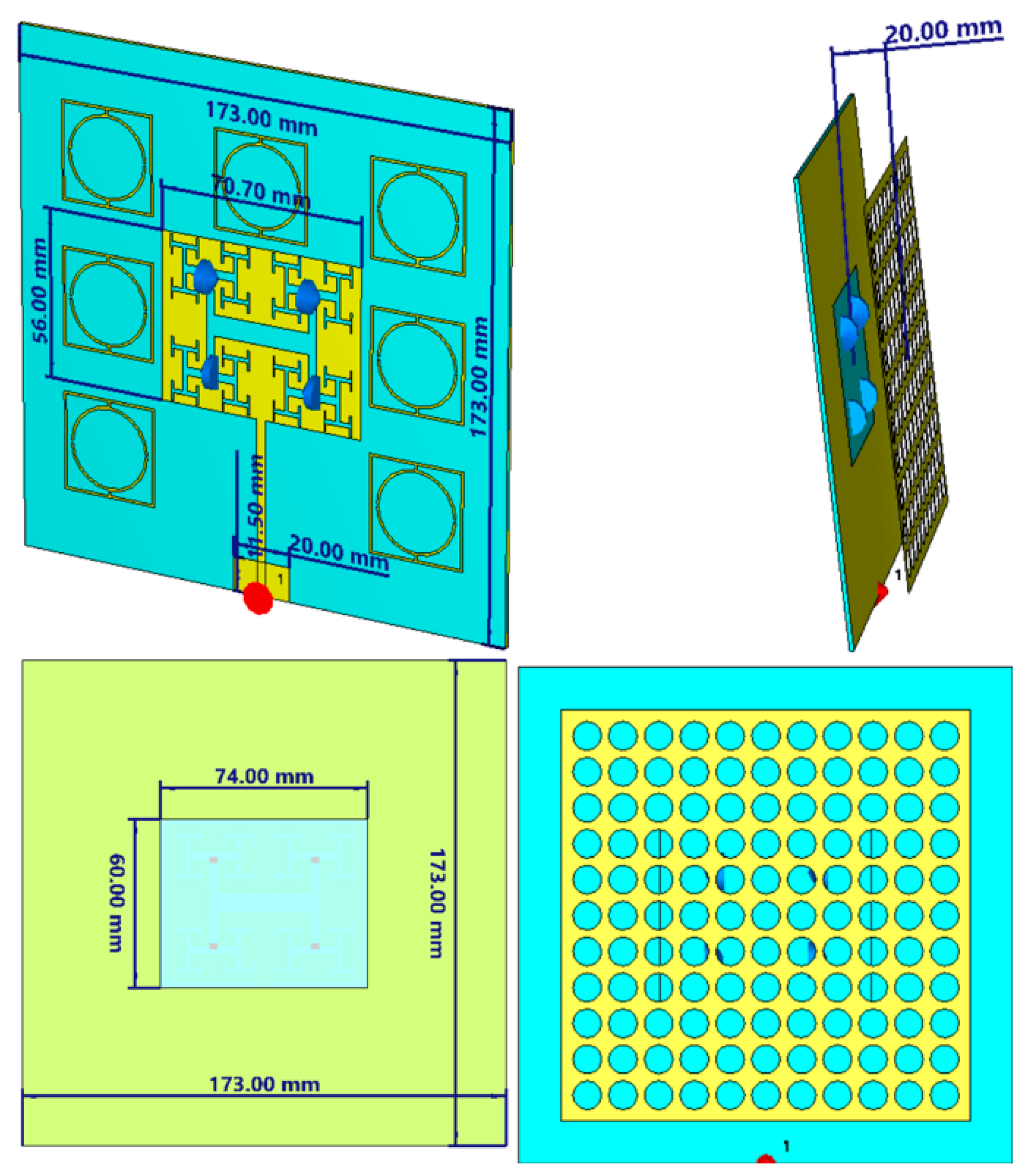
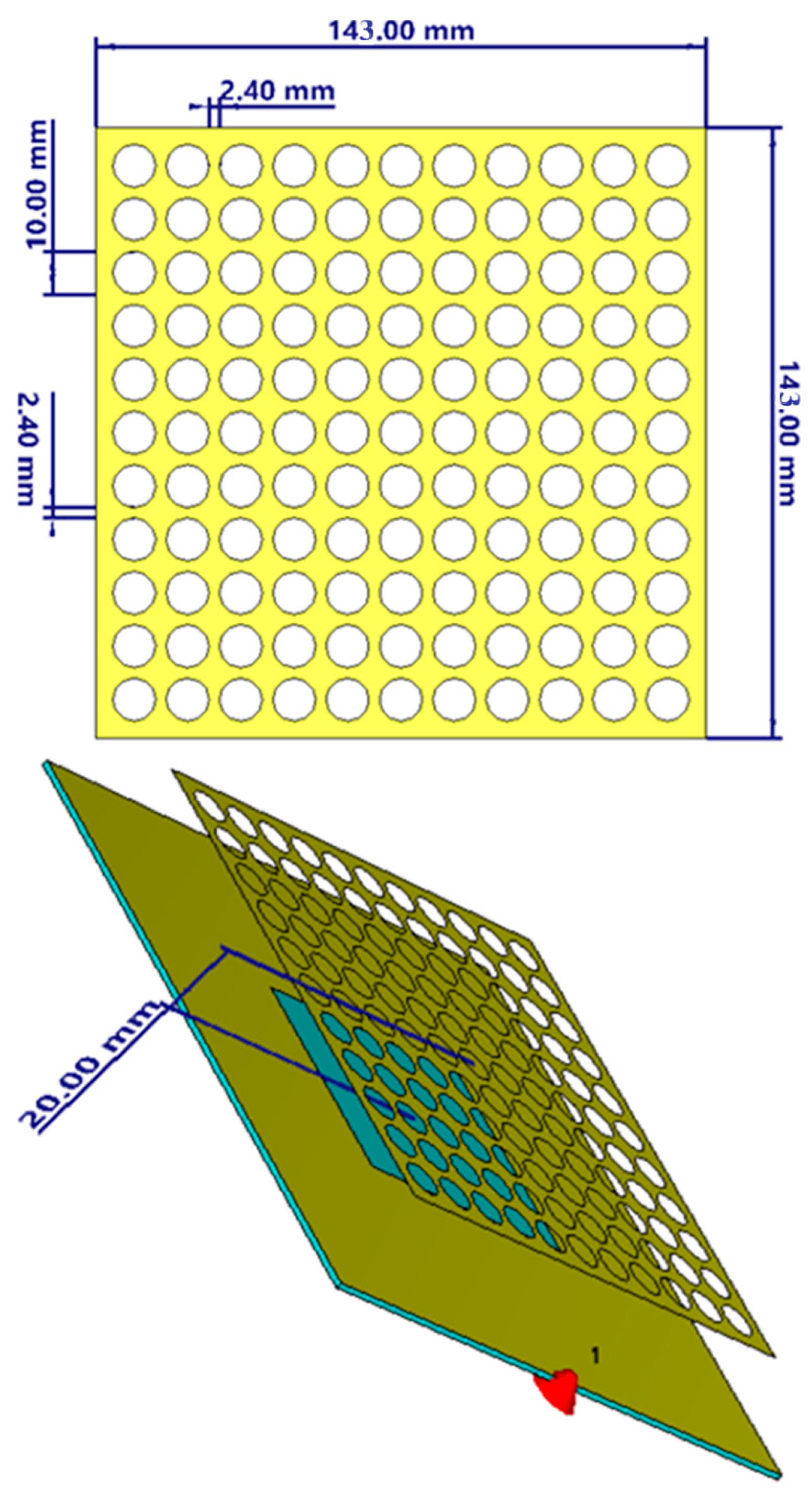
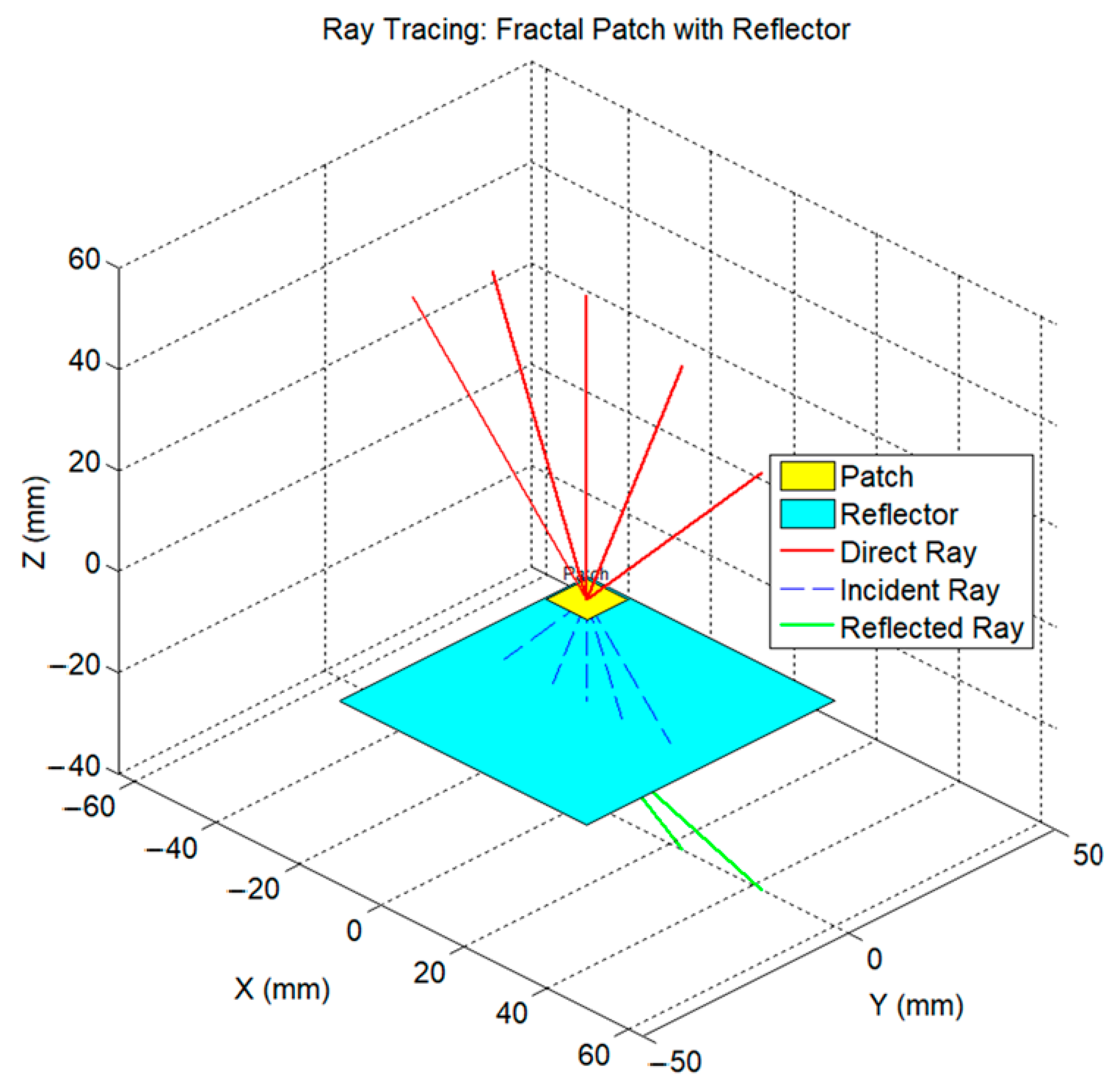

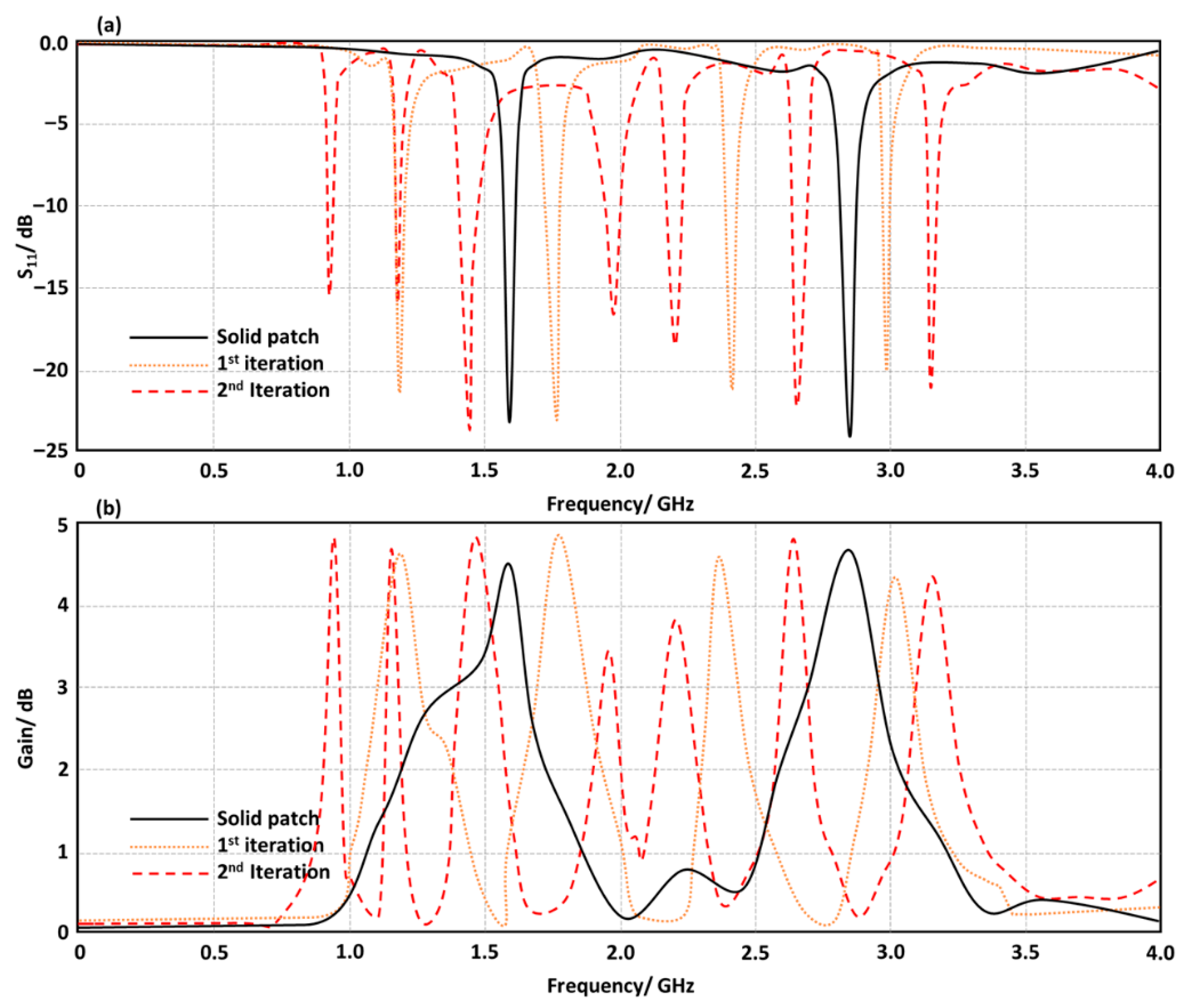


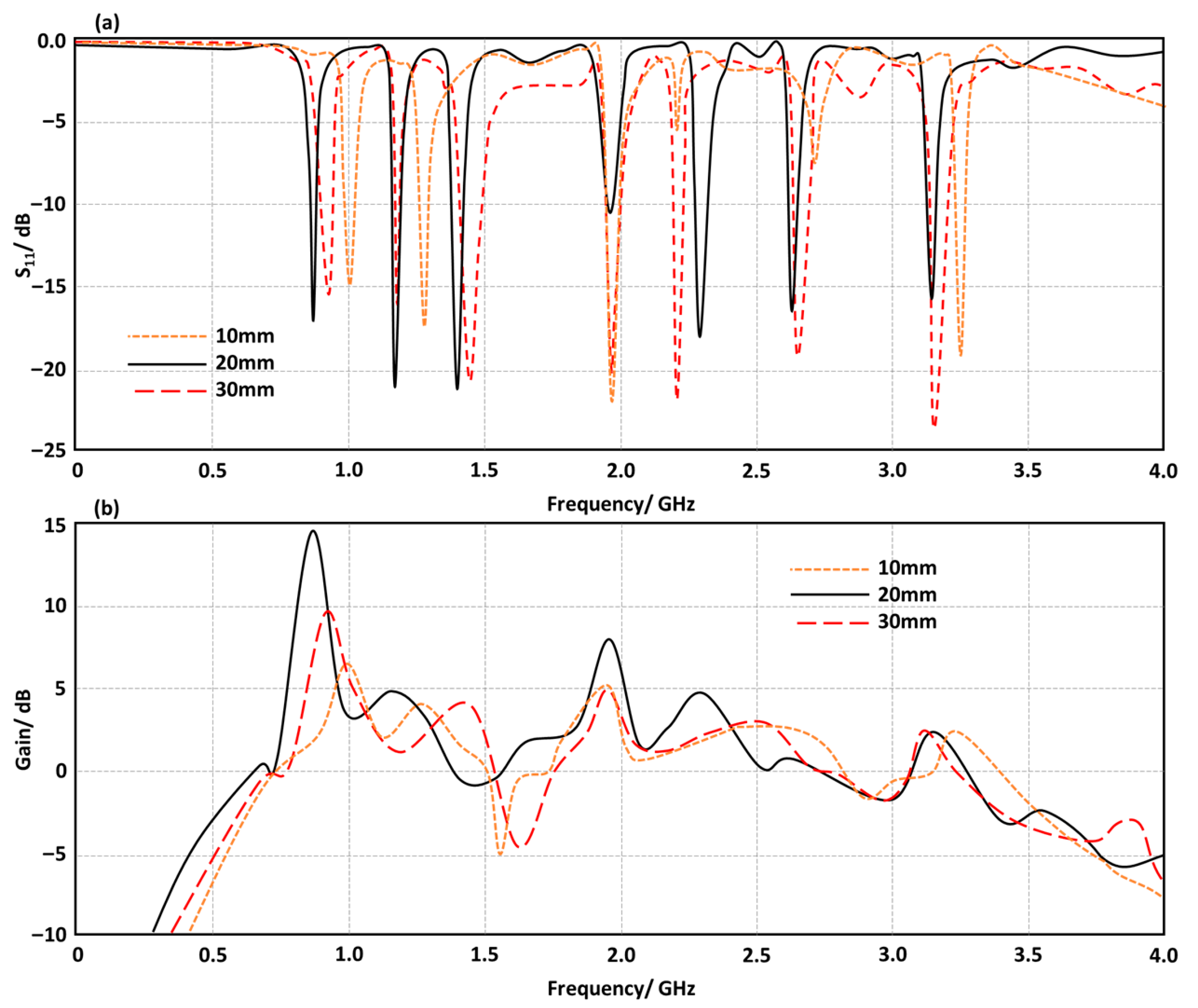
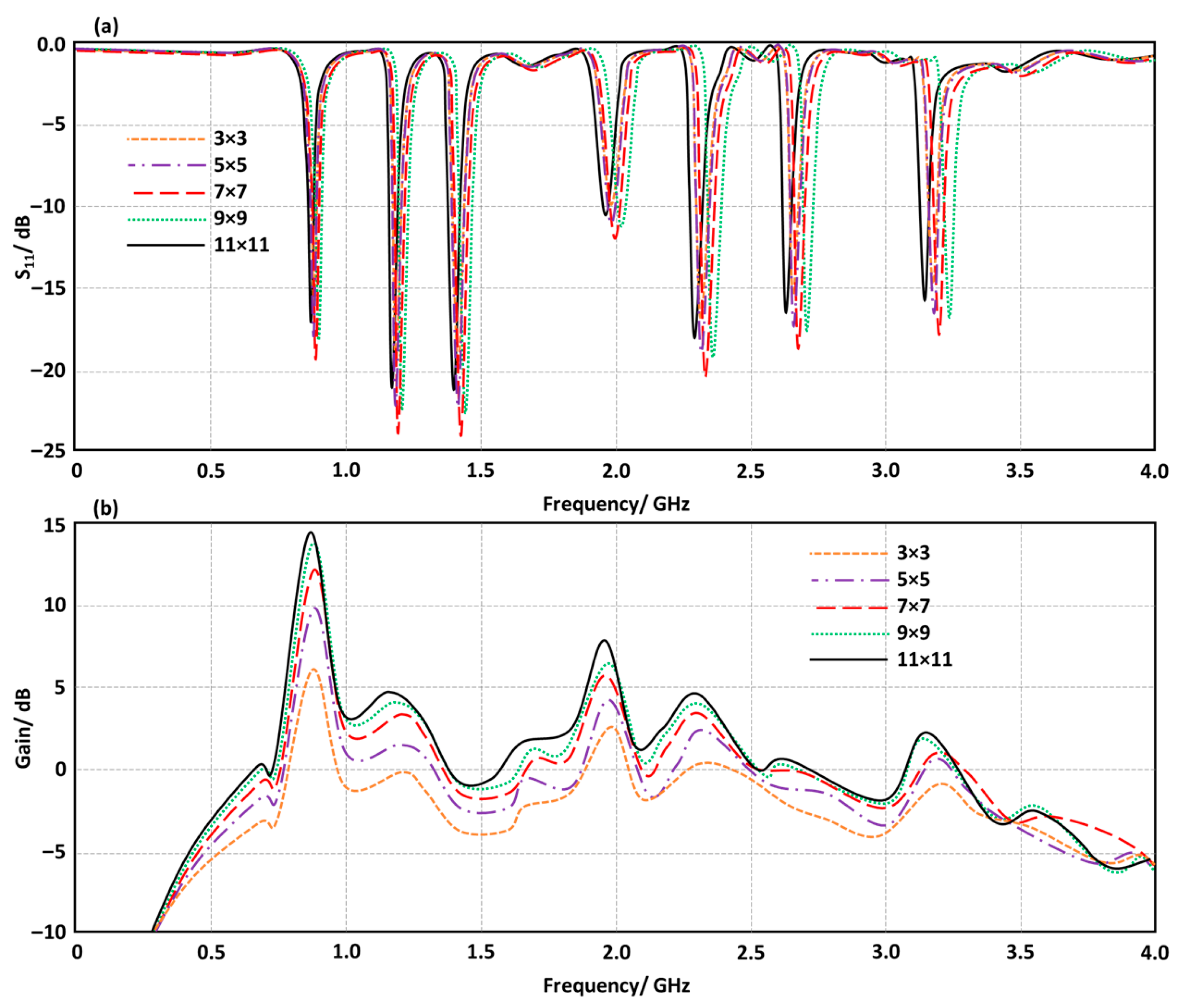
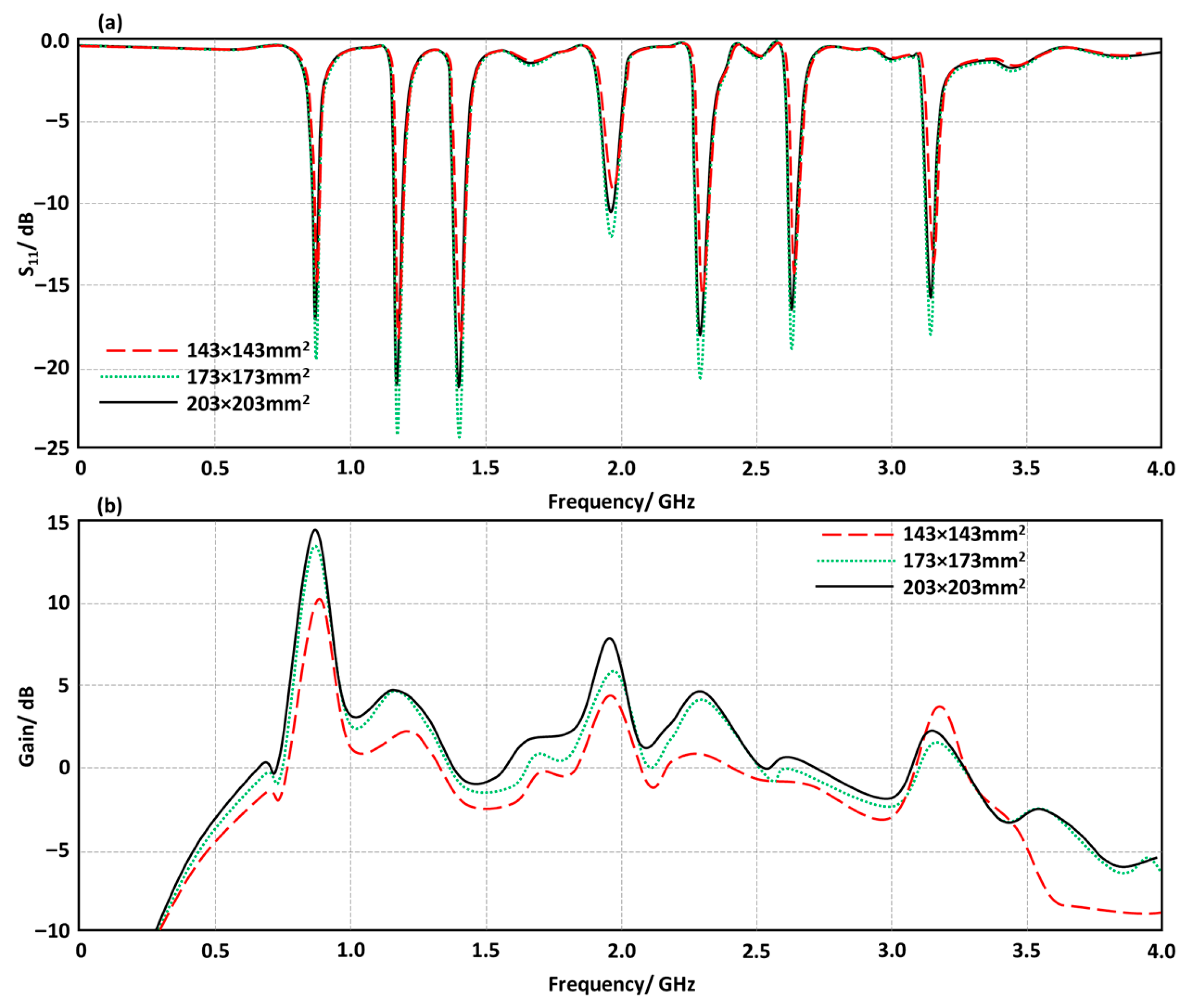
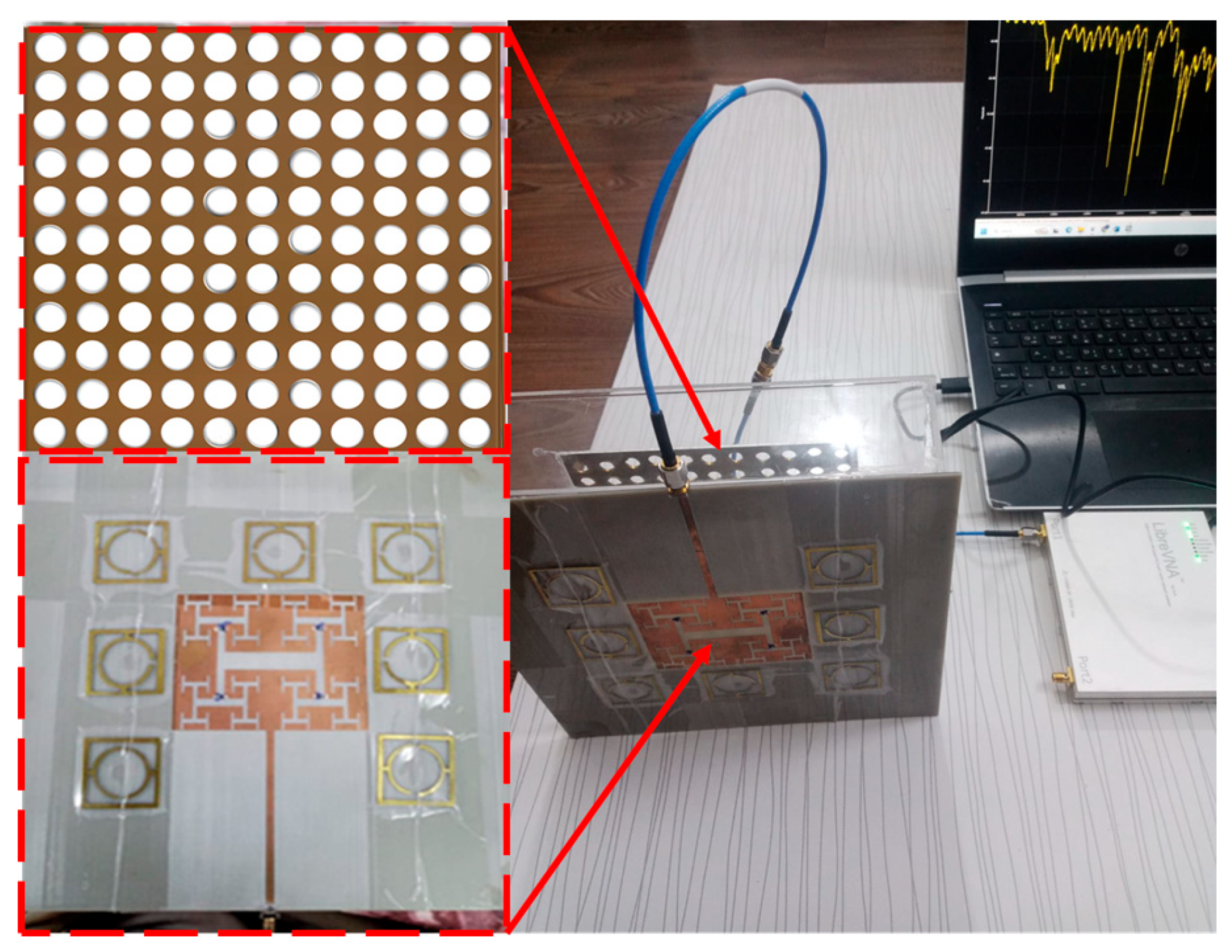
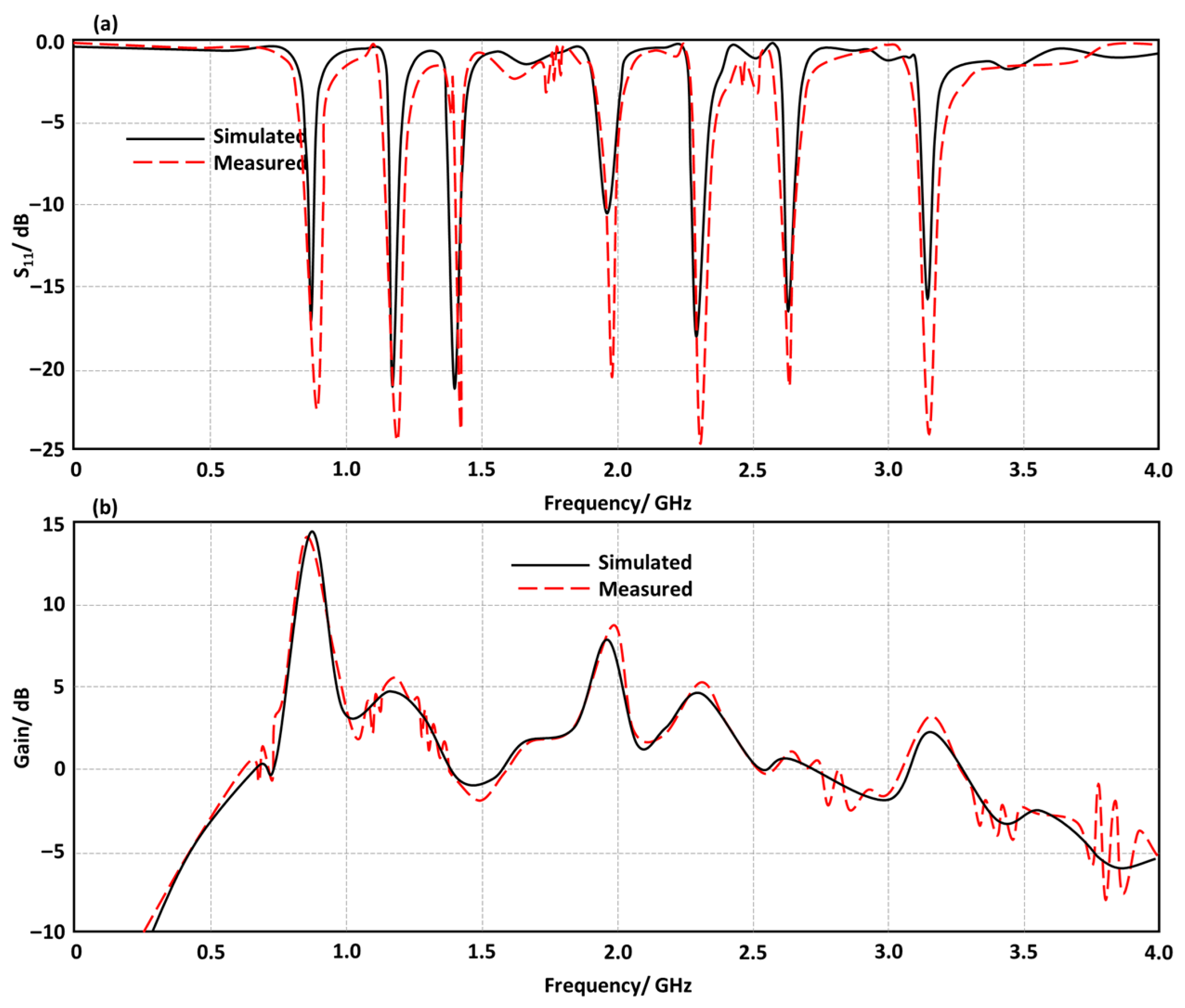
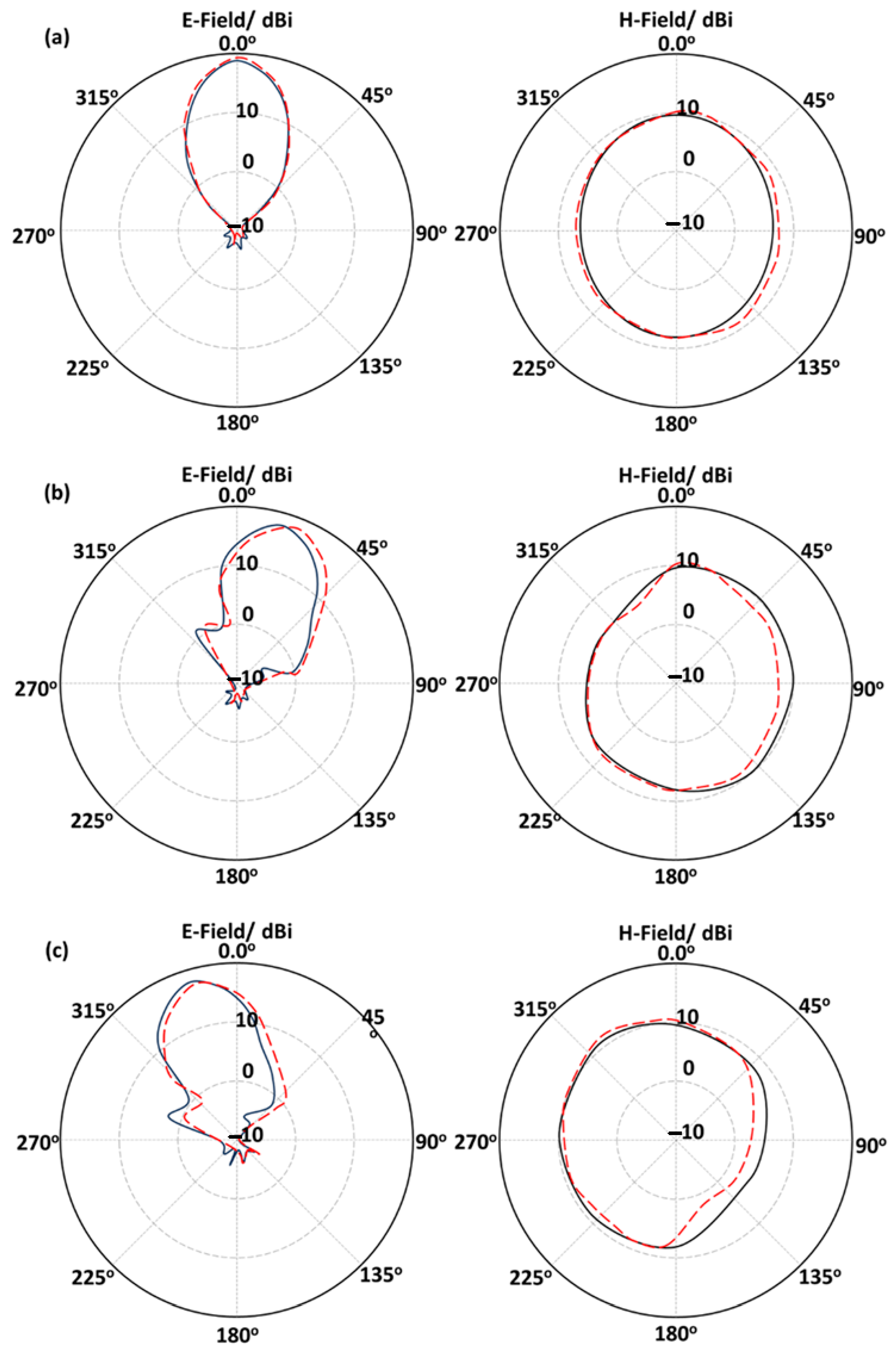
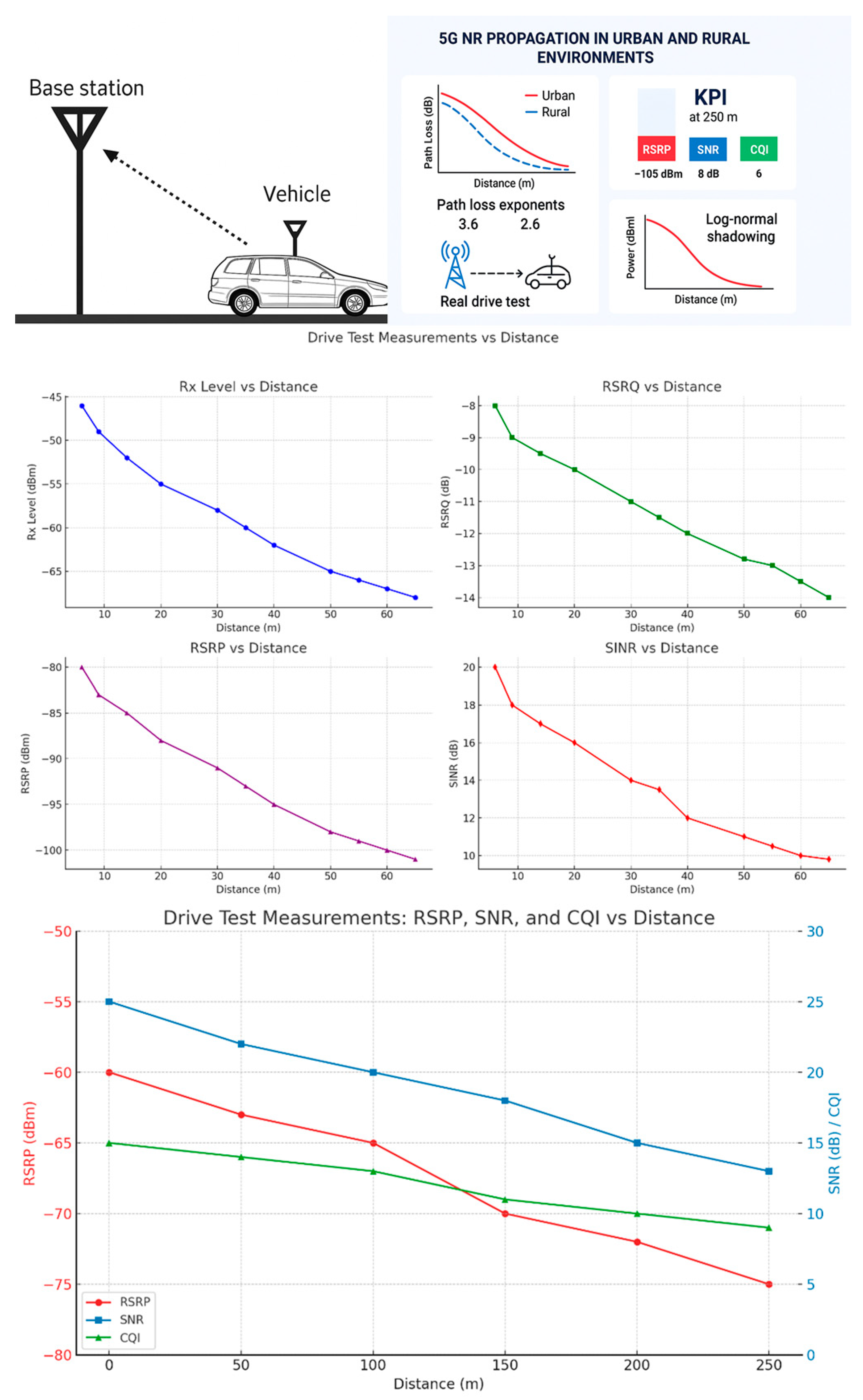
| Status for D1, D2, D3, D4 | Gain/dB | Direction/Deg. | Frequency/GHz |
|---|---|---|---|
| 0, 0, 0, 0 | 14.8 | 0 | 0.915 |
| 0, 0, 0, 1 | 13.2 | −5 | 0.913 |
| 0, 0, 1, 0 | 12.1 | −13 | 0.918 |
| 0, 0, 1, 1 | 10 | −24 | 0.910 |
| 0, 1, 0, 0 | 12.6 | −7 | 0.911 |
| 0, 1, 0, 1 | 14 | −3 | 0.912 |
| 0, 1, 1, 0 | 8.3 | 0 | 0.916 |
| 0, 1, 1, 1 | 11.1 | −20 | 0.917 |
| Parameter | Proposed Work (Baghdad Drive Test) | Urban 5G Study—Cairo | Rural LTE Drive Test—UK | Path Loss Study—India | Shadowing Analysis—Germany |
|---|---|---|---|---|---|
| Environment | Urban and Rural (Baghdad) | Urban | Rural | Suburban | Urban |
| Technology | 5G NR | 5G NR | LTE | LTE | 5G NR |
| Frequency Band | Sub-6GHz | Sub-6GHz | 1800 MHz | 2100 MHz | 3.5 GHz |
| Measurement Method | Real Drive Test | Simulation + Drive Test | Real Drive Test | Simulation | Real Drive Test |
| Distance Range (m) | 0–250 | 0–500 | 0–1000 | 0–300 | 0–200 |
| Path Loss Exponent (Urban) | 3.6 | 3.9 | N/A | 3.5 | 3.8 |
| Path Loss Exponent (Rural) | 2.6 | N/A | 2.7 | 2.8 | N/A |
| RSRP at 250 m (dBm) | −105 | −110 | −100 | −102 | −108 |
| SNR at 250 m (dB) | 8 | 6 | 9 | 7 | 5 |
| CQI at 250 m | 6 | 5 | 7 | 6 | 5 |
| Shadowing Model Used | Log-Normal | Log-Normal | Log-Normal | Okumura–Hata | Log-Normal |
| MSE Optimization | ✔ Yes (for γ estimation) | ✘ Not applied | ✔ Yes | ✘ Not used | ✔ Yes |
| Key Contribution | Real 5G data + γ derivation | 5G simulation validation | Empirical rural model | Model tuning | Shadowing variation over time |
| Reference | This paper | [6] | [9] | [11] | [12] |
Disclaimer/Publisher’s Note: The statements, opinions and data contained in all publications are solely those of the individual author(s) and contributor(s) and not of MDPI and/or the editor(s). MDPI and/or the editor(s) disclaim responsibility for any injury to people or property resulting from any ideas, methods, instructions or products referred to in the content. |
© 2025 by the authors. Licensee MDPI, Basel, Switzerland. This article is an open access article distributed under the terms and conditions of the Creative Commons Attribution (CC BY) license (https://creativecommons.org/licenses/by/4.0/).
Share and Cite
Turfa, J.K.S.; Bayat, O. Metamaterial-Enhanced Microstrip Antenna with Integrated Channel Performance Evaluation for Modern Communication Networks. Appl. Sci. 2025, 15, 10692. https://doi.org/10.3390/app151910692
Turfa JKS, Bayat O. Metamaterial-Enhanced Microstrip Antenna with Integrated Channel Performance Evaluation for Modern Communication Networks. Applied Sciences. 2025; 15(19):10692. https://doi.org/10.3390/app151910692
Chicago/Turabian StyleTurfa, Jasim Khudhair Salih, and Oguz Bayat. 2025. "Metamaterial-Enhanced Microstrip Antenna with Integrated Channel Performance Evaluation for Modern Communication Networks" Applied Sciences 15, no. 19: 10692. https://doi.org/10.3390/app151910692
APA StyleTurfa, J. K. S., & Bayat, O. (2025). Metamaterial-Enhanced Microstrip Antenna with Integrated Channel Performance Evaluation for Modern Communication Networks. Applied Sciences, 15(19), 10692. https://doi.org/10.3390/app151910692





